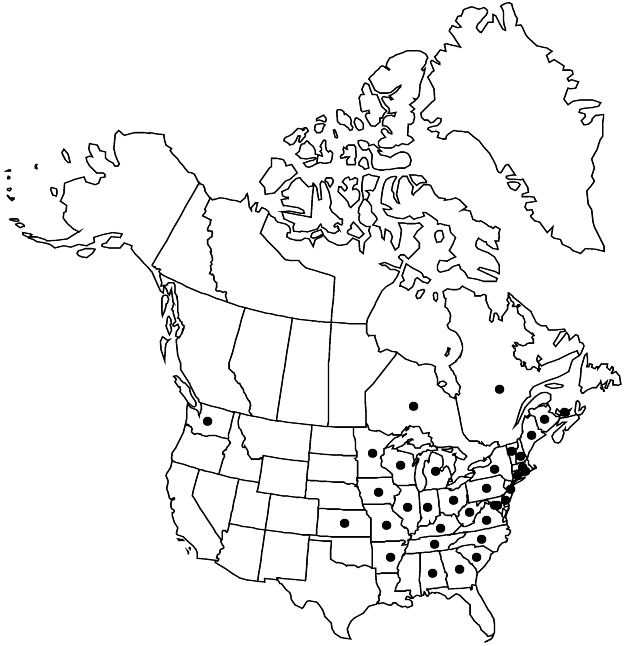Celastrus orbiculatus
in J. A. Murray, Syst. Veg. ed. 14, 237. 1784.
Common names: Oriental bittersweet
WeedyIntroduced
Treatment appears in FNA Volume 12. Treatment on page 120.
Revision as of 19:16, 5 November 2020 by imported>Volume Importer
Vines 40+ m. Leaves: blade suborbiculate to broadly oblong-obovate or ovate-orbiculate, 4–6 × 3–5 cm, aestivation conduplicate. Inflorescences axillary, cymes, 1–2 cm. Staminate flowers: pollen white. Capsules yellow when mature, globose, 7–10 mm diam., glabrous. Seeds orange, ellipsoid, 6 mm. 2n = 46.
Phenology: Flowering spring–summer.
Habitat: Thickets, woodland margins, open woods, roadsides, usually rich soils.
Elevation: 0–900 m.
Distribution

Introduced; N.B., Ont., P.E.I., Que., Ala., Ark., Conn., Del., D.C., Ga., Ill., Ind., Iowa, Kans., Ky., Maine, Md., Mass., Mich., Minn., Mo., N.H., N.J., N.Y., N.C., Ohio, Pa., R.I., S.C., Tenn., Vt., Va., Wash., W.Va., Wis., Asia (China, Japan, Korea).
Discussion
Celastrus orbiculatus has become a seriously invasive plant in much of eastern North America.
Selected References
None.
Lower Taxa
None.
... more about "Celastrus orbiculatus"
Oriental bittersweet +
N.B. +, Ont. +, P.E.I. +, Que. +, Ala. +, Ark. +, Conn. +, Del. +, D.C. +, Ga. +, Ill. +, Ind. +, Iowa +, Kans. +, Ky. +, Maine +, Md. +, Mass. +, Mich. +, Minn. +, Mo. +, N.H. +, N.J. +, N.Y. +, N.C. +, Ohio +, Pa. +, R.I. +, S.C. +, Tenn. +, Vt. +, Va. +, Wash. +, W.Va. +, Wis. +, Asia (China +, Japan + and Korea). +
true +
Syst. Veg. ed. +
1784 +
Celastrus orbiculatus +
Celastrus +
species +